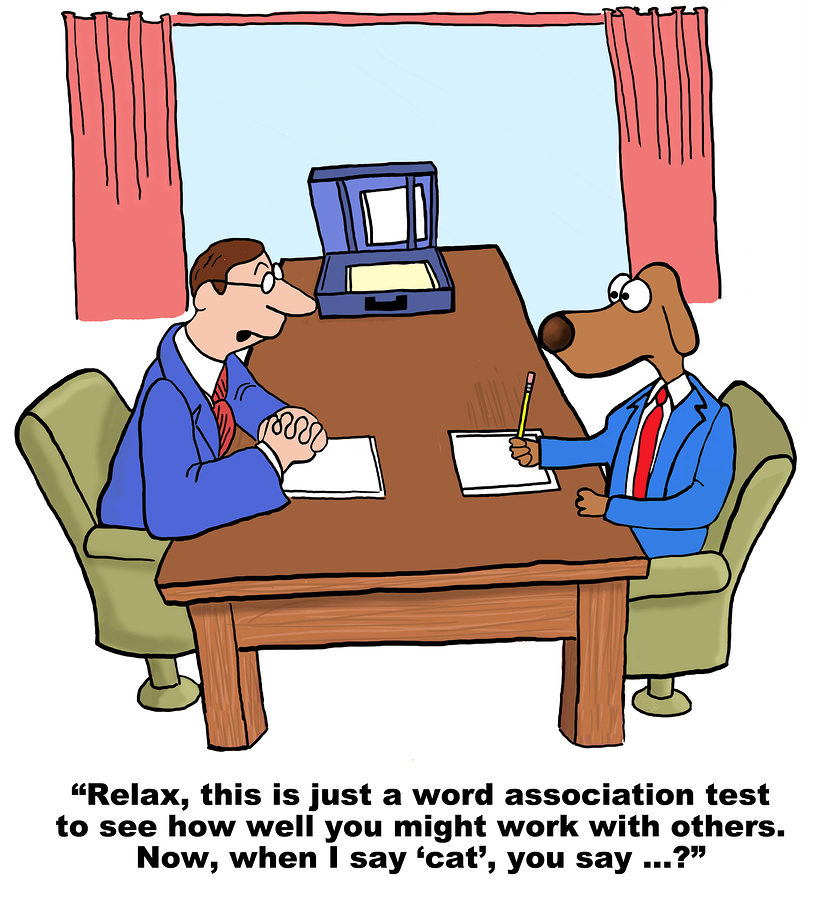The Analytical Personality Type, also known as the C-style, is logical, quiet, and focused on doing tasks correctly. Learn some tips for being more successful as a C-style.
Meet Melanie, an Analytical Personality Type
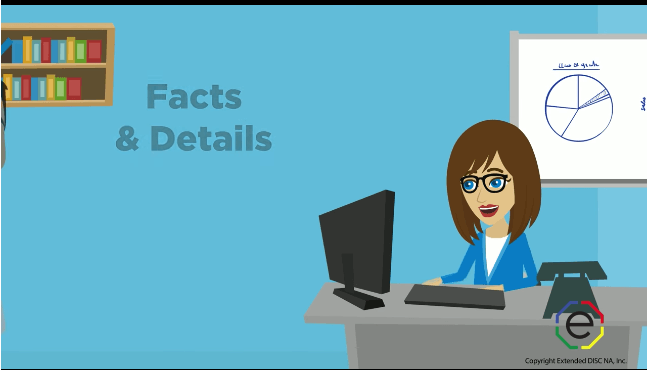 Melanie is a great example of the Analytical Personality Type. She has worked for a small accounting firm for 25 years and plans to retire in 8 years. She has been systematically working towards retirement with a clearly outlined plan. Melanie knows exactly how much she needs to save to retire. Hence, she has been saving carefully. She is constantly checking on her investment portfolio and is on track despite the stock market downturn. She worries quite a lot even though she’s on schedule. Two years ago she was ahead of the game, but now she thinks about her market losses. Melanie knows she’s still well off since she tracks her portfolio on Excel worksheets daily.
Melanie is a great example of the Analytical Personality Type. She has worked for a small accounting firm for 25 years and plans to retire in 8 years. She has been systematically working towards retirement with a clearly outlined plan. Melanie knows exactly how much she needs to save to retire. Hence, she has been saving carefully. She is constantly checking on her investment portfolio and is on track despite the stock market downturn. She worries quite a lot even though she’s on schedule. Two years ago she was ahead of the game, but now she thinks about her market losses. Melanie knows she’s still well off since she tracks her portfolio on Excel worksheets daily.
Melanie likes her accounting job reasonably well. Accounting is a comfortable career. She likes the exactness and clear rules of the profession. The downside to accounting is the constant deadlines and chasing after clients for paperwork. Melanie wonders how they can sleep at night when their accounting books are such a mess. She’s truly amazed that they are so successful in their businesses despite their accounting chaos. Melanie finds it perplexing that her clients wouldn’t want to get more organized and thus, be even more successful.
Melanie does her job well, but she feels stressed often. She has slowly learned how to efficiently manage each client’s accounting and tax returns. Some clients exhaust Melanie. She really wants to fire some clients, but once she calculates her billing rate to clean up the mess, she changes her mind. Each hour would bring her closer to her goal.
Melanie’s Daily Routine
Melanie has no free time during tax season, but she accepts it as part of her job. She makes time to exercise and never misses her 5:45 a.m. run while listening to financial freedom podcasts. Melanie feels a sense of calming and comfort in her routine. She arrives at the office promptly at 8:00 am ready to start on the first tax return.
During the tax season, Melanie eats lunch at her desk while checking her investments. Everyday she has a turkey and Swiss cheese sandwich, an apple, and a vanilla yogurt. While enjoying her sandwich, Melanie updates her investment spreadsheets and decides whether or not to adjust her investment portfolio.
Melanie arrives home at 7:30. She heats up leftovers that she’d prepared over the weekend. She reads financial articles on her iPad while eating. After dinner she catches up on the news or reads a book while sipping a glass of Merlot. Then it’s off to bed at 10:30 to get ready to start the next day. Melanie finds the disciplined routine helps her survive tax season.
How Melanie relaxes
After tax season, Melanie can relax. She’s always home by 5:00 pm and keeps work life and home life separate. Melanie likes to focus on small home improvement projects and pamper her 2007 white Corvette. Melanie surprised everyone, including herself, by buying it a little over two years ago. One of her clients had told her to relax and to enjoy life more now. Melanie always thought her client was a bit reckless with his own spending, but he did make a good point. After researching used sport cars, Melanie came across this Corvette. The Corvette only had 3,700 miles on it and was immaculate. Melanie intended to keep it that way. She only took it out on weekends for the usual local drive and carefully parked it far away from other cars to avoid possible dings.
After a long day of work or on the weekends Melanie likes to be in her study. The room is fully equipped with a TV, books, computer tablet, finance magazines, and her wine collection. She really could spend all day closeted in her study. Melanie has a small circle of friends. A few go back all the way to high school. She likes to get together with them for dinner, a glass of wine, or to discuss current events and financial markets. Though she is busy focusing on her work and retirement, Melanie feels fortunate to have such good friends.
Introducing the Analytical Personality Type
 The Analytical Personality Type is the most logical and systematic of the 4 DISC profiles. She is reserved, detail-oriented and prefers to focus on facts and data. She’s also comfortable working alone. The Analytical Personality Type can focus on a specific task for long periods of time and doesn’t mind if there’s no contact with others. Actually, she sees a phone call or an unannounced visit by a colleague as a distraction from the task. She likes working on one thing at a time so the task can be completed well and correctly. As a result, the C-style is excels at doing thorough analyses and quality work.
The Analytical Personality Type is the most logical and systematic of the 4 DISC profiles. She is reserved, detail-oriented and prefers to focus on facts and data. She’s also comfortable working alone. The Analytical Personality Type can focus on a specific task for long periods of time and doesn’t mind if there’s no contact with others. Actually, she sees a phone call or an unannounced visit by a colleague as a distraction from the task. She likes working on one thing at a time so the task can be completed well and correctly. As a result, the C-style is excels at doing thorough analyses and quality work.
The Analytical Personality Type tends to believe there is only one right way to do things and that way is to avoid mistakes. She is logical and methodical in her approach. She believes rushing through tasks will result in unnecessary and costly errors.
The Analytical Personality Type is cautious and compliant to her own high standards. Her emphasis is to work with the existing circumstances to ensure the quality of the product or service. She wants everything to work the way it should and this may cause the C-style be critical of others. She expects everyone to follow her standards. Her attention to detail and correctness can be seen as nit-picky. She doesn’t want to criticize, but she just wants it is done right. The C-style wants you to know it’s nothing personal.
Analytical Personality Type’s guide to decision making
The Analytical Personality Type is most natural when making decisions where information is analyzed. The Analytical Personality Type’s natural tendency to analyze the data and to carefully evaluate the different alternatives is very valuable in certain fields like engineering. She can patiently and thoroughly look at issues from many angles and not rush ahead. We all hope when we are flying that the airline’s mechanics have C-style tendencies.
The C-style is so focused on getting it right, she still thinks about past projects she completed. There’s one retired executive who keeps grieving over the “bad decisions” she has made. She keeps bringing up a decision she feels responsible for that cost the company over $50,000. She still dwells on whether or not it was the right decision and she retired about 15 years ago! The Analytical Personality Type finds letting go of mistakes a challenge.
On the other hand, the C-style’s desire to do things correctly can slow down her decision-making. She can over-analyze issues and information. The C-style often does extensive research . She likes to organize and review the data. Spreadsheets are fun! However, she can get bogged down by data and end up without a decision. Do you know people who can’t stop talking about their major purchase, such as buying a car or laptop, for months after months? The C-style may even delay purchases on products that come out with new models often like cell phones. When it comes to decision making, the C-style is most comfortable when she has time to review and analyze data to make the best informed choice.
The social Analytical Personality Type
Socially, the Analytical Personality Type is the most reserved of the four DISC profiles. She tends to be quiet and doesn’t easily express her emotions. She comes across as reserved, matter-of-fact, and formal. If she doesn’t know the people well then this is especially true. The C-style opens up more with the people she’s close to, but even then, are more reserved and animated than the other styles. Others find it harder to know what the C-style is thinking since she’s quieter and more reserved.
She prefers to focus on one topic at a time. Her communication style is more deliberate and thoughtful. The Analytical Personality Type finds settings where many people excitedly interject their views to be challenging. She prefers when others stick to the topic. People who embellish or stray from the topic can frustrate her. She is more comfortable in one-on-one situations or in forums where everyone is given equal and ample time to clearly make her point.
Careers and demographics
We find more C-styles in the stereotypical careers such as accounting and engineering. These fields offer the Analytical Personality type the ability to specialize and primarily work alone or small groups. She can focus on detailed work that requires accuracy and analyzes a lot of data and information. In addition, the C-style can often be working as CFOs, financial analysts, information specialists, programmers, and quality control directors. She prefers to work for organizations that offer a more formal structure, clearly provided policies and procedures. Hence, the C-style finds that security in established companies are predictable and organized. She finds fast-paced, free-wheeling, unproven organizations uncomfortable. The Analytical Personality Type is the best style for the job if something needs to done correctly and there is little or no room for mistakes.
The Analytical Personality Type makes up 30% of the global population. In the USA, 29% of the population are C-styles.
The Analytical Personality Type asks the “why” questions
Obviously, as successful people we ask all questions, but we find that the Analytical Personality Type prefers to ask questions focusing on tasks and things. The C-style tends to ask many “Why?” questions. She may ask, “why is this important?” or “why does it cost more?”. In addition, she may ask, “why should I believe this data?” or “why is this the correct way to do this?”. She wants to know why.
Challenges for the Analytical Personality Type
For the C-style it’s important to be correct, like doing things right or working on the right things. In addition, one of the worst things that can happen for the C-style is being criticized by others. This is naturally related to her desire to do things correctly. She takes it hard if someone finds an error in her work or discovers a better way of doing her task. However, she is often her own toughest critic. She rates her job performance on being correct and doing tasks the right way.
The Analytical Personality Type wants to prepare and understand the process before taking action. This style can be especially challenging to D- and I-styles. They are willing to risk some mistakes in order to move quickly. On the flip-side the C-style can get frustrated with their fast-paced and riskier approach.
Understanding mistakes happen and it’s okay
Since the C-style has a keen eye for doing things correctly, finding mistakes seems to be easy. You notice when a “t” is not crossed and the “i” is not dotted. It’s a natural strength. Grant yourself permission to make mistakes. While striving for improvement is great, know that mistakes are a part of life. Give yourself permission to make some, learn from them and then move on without dwelling on them. You cannot change the past. Let it go. Also, “perfection” is an elusive goal as very few things in this world. No one individual is perfect. Finally, it may be good for you to remember that often “perfection”, like beauty, is in the eye of the beholder.
As a C-style, what can you do to improve your performance? Just like the other DISC-styles, your areas of improvements are strongly correlated with your strengths. Focusing on doing things correctly tends to make you overly critical of others and yourself. You beat yourself up over every mistake. Even your definition of a mistake may be critical. What is fine for others may not be good enough for you. Hence, when you see something as not perfect then you may consider it a “failure”. Others may not ever notice the mistake you see. Often going for “good” instead of “perfect” is enough. The additional work required to achieve any marginal improvements may not be worth your effort. Try focusing your time and efforts to other matters that yield better overall results.
Criticizing Others
Quality control is important but, pointing out others’ errors can be annoying. Remember, you don’t like being criticized for mistakes. Others are the same. Have you ever overheard a parent go off on her kid about missing an “easy” shot or correcting their technique? Even when you didn’t see anything noticeably in need of critique. Instead all of the right things the kid did during the game, the parent was focused on the one moment they’d “messed up”. You remember the kid’s disheartened demeanor.
I share this quick story because the Analytical Personality Type tends to point out the errors of others. This is one of the most important development areas for the C-style. Learn to focus more on the things that are right rather than things that are wrong. You will find others around you will respond and do better. Of course, people need to be accountable and teach our kids. Try a way that motivates and encourages for better performance rather than demoralize and dejects. What if the parent had just celebrated his kid’s great game and then later practiced field goals? How motivated would his son be to continue to play well and improve?
Remember what is really important in the long-run and keep the big picture in mind. Practice this by trying to always first focus on what is right and positive. When you consciously begin to shift your focus on what is right and positive, you will gradually see what is actually “right” and “correct”. You’ll be amazed how positive of an impact it will have on you and people around you.
Why step outside your comfort zone?
I am fully aware you are skeptical now. You may think all of this will result in sloppy performance, lack of discipline, mistakes, and chaos. It’s just permission to slack off. If you do not aim for and or demand perfection, quality will drop. However, at the big picture level things will actually improve.
You will get more done. Others will get more done. You and others will be more positive. Others will be happier. You will also be happier if you can let go of some of the small stuff. Yes, the office supplies will not be perfectly organized. Kids will still miss shots or forget their technique. You’ll find some typos. There will be many small mistakes. Learn to accept that there will always be a level of clutter and mistakes. Make peace with it. Once you do you can step back and redirect focus on improving, you can start enjoying your work and life as a whole.
Looking at the big picture for the Analytical Personality Type
Learn to keep the big picture in mind when making decisions. Your decision making will speed up! As you make decisions, consider what is more important: accuracy or speed? Recognize that speed is more important in some decisions. First, practice making quicker decisions in low-risk situations. Try it when you make a minor purchase. Decide without comparing every product detail and competing pricing. Make a decision and move on. Do not go back and research if you made the right decision. Trust yourself and leave your past decisions in the past. It allows you to focus on decisions and actions you need to make now. It also allows you to focus more on the present. As a result, you will be able be present, waste extra energy, and enjoy it more.
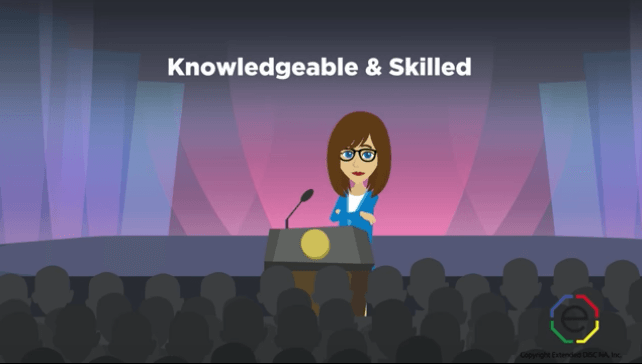 Finally, give yourself permission to enjoy your life more. Do not set unattainable standards. Do not let others do the same for you. Just because someone in a position of authority or expertise says so doesn’t mean it has to be so. The world, life, other people and you are imperfect. Continue to use your strengths, but learn ways to keep improving. Once you look past every imperfection and focus on the big picture instead, you may find how perfect everything really is.
Finally, give yourself permission to enjoy your life more. Do not set unattainable standards. Do not let others do the same for you. Just because someone in a position of authority or expertise says so doesn’t mean it has to be so. The world, life, other people and you are imperfect. Continue to use your strengths, but learn ways to keep improving. Once you look past every imperfection and focus on the big picture instead, you may find how perfect everything really is.
 Alex is a great example of a Steady Personality Type. He has worked as a bank branch manager for 12 years. Alex was just promoted because the previous manager suddenly left for a job at a competitor bank. Alex was the Relationship Manager and also Darren’s “unofficial” assistant manager. Darren delegated many of his routine responsibilities to Alex so he could focus on more interesting tasks. Darren thrived on business development.
Alex is a great example of a Steady Personality Type. He has worked as a bank branch manager for 12 years. Alex was just promoted because the previous manager suddenly left for a job at a competitor bank. Alex was the Relationship Manager and also Darren’s “unofficial” assistant manager. Darren delegated many of his routine responsibilities to Alex so he could focus on more interesting tasks. Darren thrived on business development.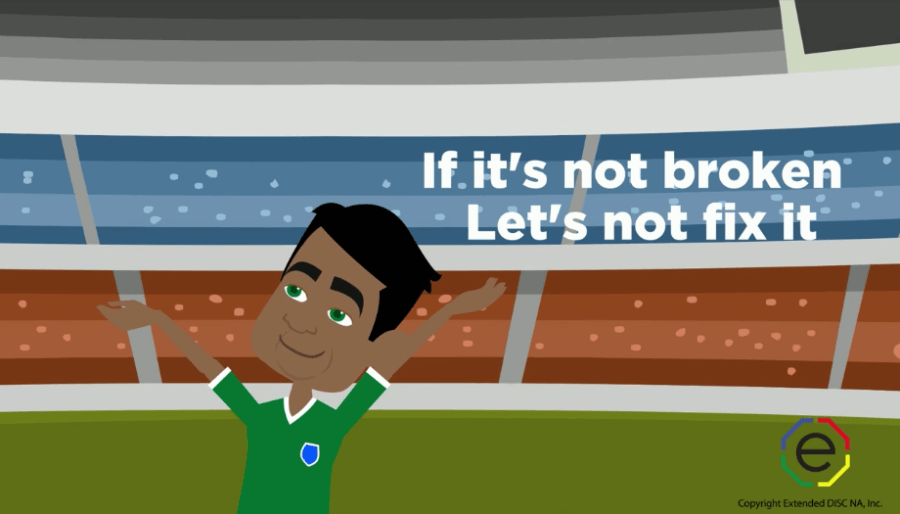 The Steady Personality Type is just that, steady. He’s also reserved, calm, and modest. While he likes people, the S-style is different from the social and outgoing I-style. He prefers interactions with familiar people. The Steady Personality Type prefers things to remain the same because changes and surprises threaten his sense of stability and security. As a result, he prefers environments that are safe and familiar. Often the S-style has a certain routine at work and home that he likes to follow. This provides a comfortable feeling of familiarity and security for the S-style.
The Steady Personality Type is just that, steady. He’s also reserved, calm, and modest. While he likes people, the S-style is different from the social and outgoing I-style. He prefers interactions with familiar people. The Steady Personality Type prefers things to remain the same because changes and surprises threaten his sense of stability and security. As a result, he prefers environments that are safe and familiar. Often the S-style has a certain routine at work and home that he likes to follow. This provides a comfortable feeling of familiarity and security for the S-style.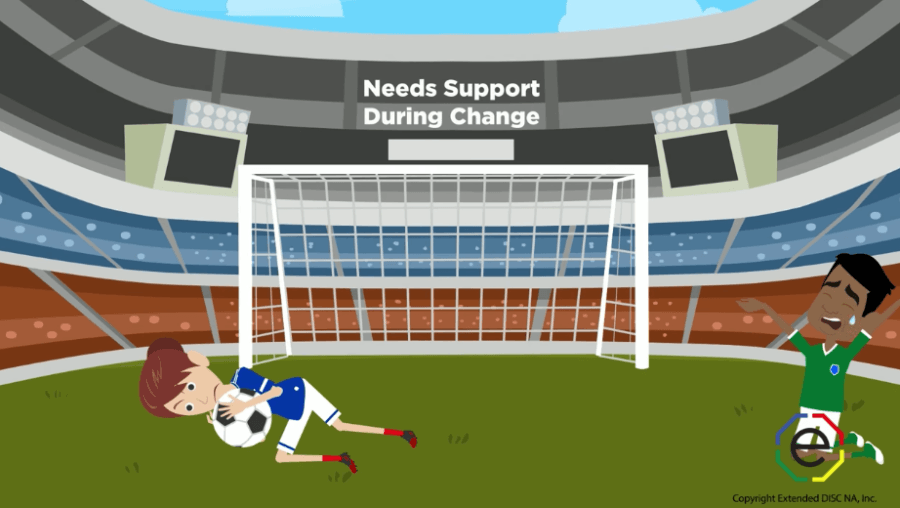 The Steady Personality Type is reliable with an emphasis on cooperation and guidance to carry out tasks. As a result, the S-style likes to be provided with guidance and direction to complete the tasks correctly. When the S-style is not provided with adequate directions, he feels uncomfortable and hesitant to take action. He may seek out his trusted co-workers for help. Often the S-style doesn’t really need the co-worker’s guidance, but just their support. Frequently, the S-style can overestimate the amount of work involved and hence, become overwhelmed. He may hesitate to start. However, once an S-style starts, he is almost unstoppable. The S-style is amazingly persistent and in many ways are the “doers” of the DISC profiles. Once they decide to do something, they’re single-minded in achieving their goal.
The Steady Personality Type is reliable with an emphasis on cooperation and guidance to carry out tasks. As a result, the S-style likes to be provided with guidance and direction to complete the tasks correctly. When the S-style is not provided with adequate directions, he feels uncomfortable and hesitant to take action. He may seek out his trusted co-workers for help. Often the S-style doesn’t really need the co-worker’s guidance, but just their support. Frequently, the S-style can overestimate the amount of work involved and hence, become overwhelmed. He may hesitate to start. However, once an S-style starts, he is almost unstoppable. The S-style is amazingly persistent and in many ways are the “doers” of the DISC profiles. Once they decide to do something, they’re single-minded in achieving their goal.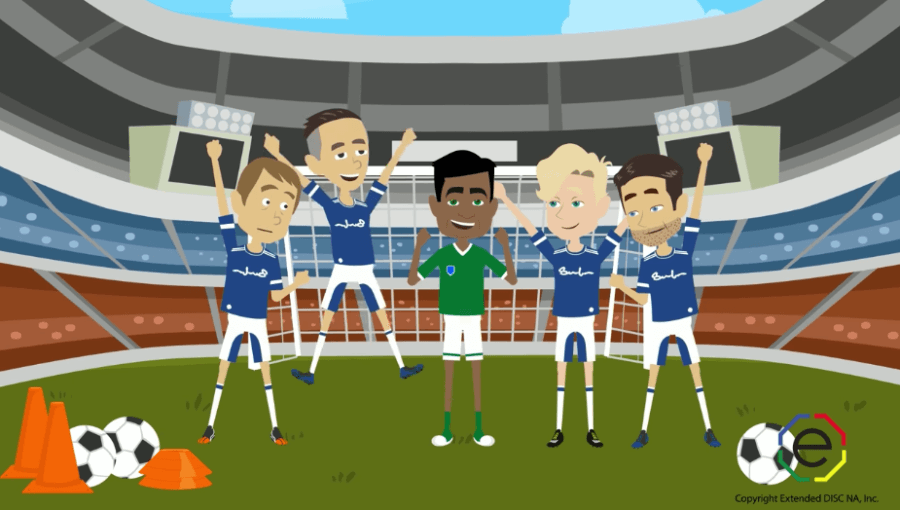 You’ve probably noticed a common theme here. In essence, learn to believe in yourself more and become more comfortable in assertively and quickly taking action. In the beginning you will find it uncomfortable and challenging. However, with practice it becomes easier and you will find it gratifying. You will also find others respond well to your adjusted behaviors. Remember, you do not need to change who you are. That should never be the goal. Continue to use your natural strengths. Just do it more assertively now.
You’ve probably noticed a common theme here. In essence, learn to believe in yourself more and become more comfortable in assertively and quickly taking action. In the beginning you will find it uncomfortable and challenging. However, with practice it becomes easier and you will find it gratifying. You will also find others respond well to your adjusted behaviors. Remember, you do not need to change who you are. That should never be the goal. Continue to use your natural strengths. Just do it more assertively now. Jake is an ideal social personality type and a very high I-style. He loves meeting, talking, socializing, and just being around people. Everyone clearly sees Jake is energized whenever he’s interacting with people. Does he even spend time alone? Every morning Jake has his breakfast at the local coffee shop. He always reads his newspaper, but quickly glances up every time the door opens. As soon as a familiar face walks in he’d wave them over. He smiles at everyone to encourage interaction. Breakfast can take a long time since different people spend time with him.
Jake is an ideal social personality type and a very high I-style. He loves meeting, talking, socializing, and just being around people. Everyone clearly sees Jake is energized whenever he’s interacting with people. Does he even spend time alone? Every morning Jake has his breakfast at the local coffee shop. He always reads his newspaper, but quickly glances up every time the door opens. As soon as a familiar face walks in he’d wave them over. He smiles at everyone to encourage interaction. Breakfast can take a long time since different people spend time with him. You probably know at least one social personality type. They are I-styles. You know how fun they are to be around. They’re outgoing, social, and talkative, and enjoy being the center of attention. I-styles like interacting and meeting new people.
You probably know at least one social personality type. They are I-styles. You know how fun they are to be around. They’re outgoing, social, and talkative, and enjoy being the center of attention. I-styles like interacting and meeting new people.  be thinking: “What can you do to further your success?” Again, the most general advice is to learn to understand all of the DISC-styles, identify your own style and create a keen self-awareness, learn to identify styles’ of others and to adjust your style to the other person(s) or situation. That is fine and well but what about the specifics?
be thinking: “What can you do to further your success?” Again, the most general advice is to learn to understand all of the DISC-styles, identify your own style and create a keen self-awareness, learn to identify styles’ of others and to adjust your style to the other person(s) or situation. That is fine and well but what about the specifics? If you were to ever meet Maxine, it wouldn’t take you long to recognize he ultra competitiveness. She’s a D-style personality type. Although Maxine usually greets people she meets with a smile, there’s an intense energy to her. Simply put, Maxine wants to win in everything and anything she participates in. She always wants to finish first. Maxine thrives when there are many things happening at the same time. She loves directing chaotic settings. Maxine seems to want to push people and things to the very edge of being out of control. The thrill of activity, speed and moving forward clearly provides Maxine with energy and motivation.
If you were to ever meet Maxine, it wouldn’t take you long to recognize he ultra competitiveness. She’s a D-style personality type. Although Maxine usually greets people she meets with a smile, there’s an intense energy to her. Simply put, Maxine wants to win in everything and anything she participates in. She always wants to finish first. Maxine thrives when there are many things happening at the same time. She loves directing chaotic settings. Maxine seems to want to push people and things to the very edge of being out of control. The thrill of activity, speed and moving forward clearly provides Maxine with energy and motivation. The
The  If you know a D-style, you probably have noticed he or she will ask many “what?” questions. “What’s this all about?” or “what are you going to do about it? In addition, there’s, “what’s the bottom line?” and “what’s in for me?”
If you know a D-style, you probably have noticed he or she will ask many “what?” questions. “What’s this all about?” or “what are you going to do about it? In addition, there’s, “what’s the bottom line?” and “what’s in for me?” If you are a D-style, you may be wondering what you can do to become even more successful. At the most general level, my advice is the same for all four DISC-styles. First you need to understand all of the DISC Styles then be able to know your own style. Next, learn to identify the style of others so you can make changes to your style.
If you are a D-style, you may be wondering what you can do to become even more successful. At the most general level, my advice is the same for all four DISC-styles. First you need to understand all of the DISC Styles then be able to know your own style. Next, learn to identify the style of others so you can make changes to your style.
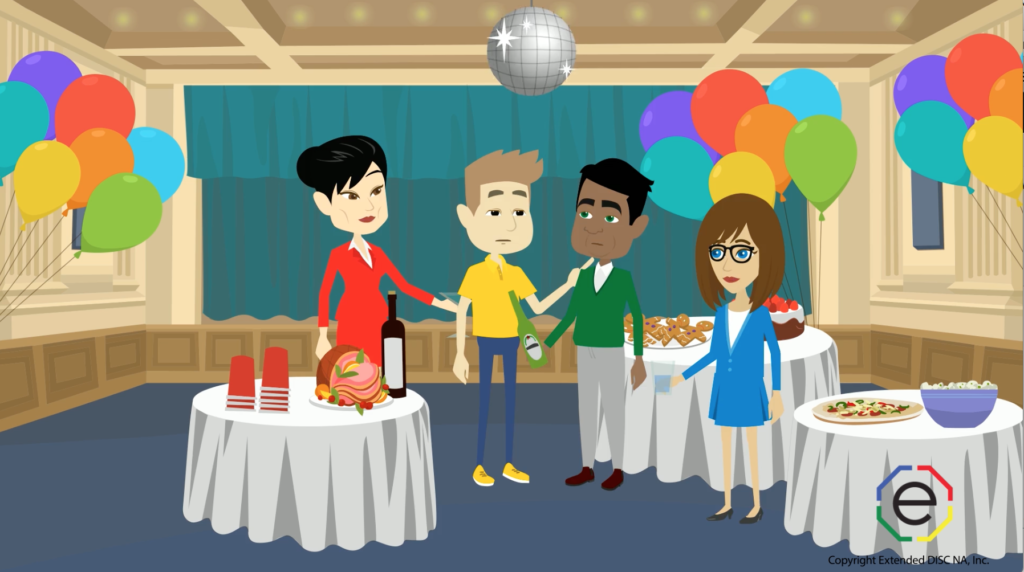 Think back on a time you were frustrated trying to return a gift or getting help on the phone or in person. We’ve all been there. You know what you are talking about, but the person doesn’t seem to get it. Then we tend to become more emotional and things start to spiral down. We don’t communicate the same way. We are unique and we have different styles. Self-awareness is one step towards better communication, but it is just as important to identify styles of others. Remember the simple OAR acronym that stands for observe, assess, and recognize. This is a skill that takes practice, but is easy to learn.
Think back on a time you were frustrated trying to return a gift or getting help on the phone or in person. We’ve all been there. You know what you are talking about, but the person doesn’t seem to get it. Then we tend to become more emotional and things start to spiral down. We don’t communicate the same way. We are unique and we have different styles. Self-awareness is one step towards better communication, but it is just as important to identify styles of others. Remember the simple OAR acronym that stands for observe, assess, and recognize. This is a skill that takes practice, but is easy to learn. Pressures and demands create stress for all people. During the holidays we have the joy of seeing family, wonderful meals, and even exchanging cards and gifts. However, we are often working through the holidays which can be a lot. We need to find the balance between the pressures and the joy of this time. One way is to recognize our signs of stress. While it is nearly impossible to eliminate stress, we can manage it by understanding our own unique causes and signs of stress, as well as how best to alleviate it. The causes of stress are different from one person to another. Look at your DISC report to see what typically causes you stress and how you tend to react to stress. Your DISC report can tell you how you show signs of stress and how someone with your style prefers to manage stress.
Pressures and demands create stress for all people. During the holidays we have the joy of seeing family, wonderful meals, and even exchanging cards and gifts. However, we are often working through the holidays which can be a lot. We need to find the balance between the pressures and the joy of this time. One way is to recognize our signs of stress. While it is nearly impossible to eliminate stress, we can manage it by understanding our own unique causes and signs of stress, as well as how best to alleviate it. The causes of stress are different from one person to another. Look at your DISC report to see what typically causes you stress and how you tend to react to stress. Your DISC report can tell you how you show signs of stress and how someone with your style prefers to manage stress. Think of those holiday dinners when there are too many generals trying to direct the cooking. We all have preferred ways of doing things and can do them easily and efficiently. In times where we are emotional we tend to rely on our natural style even more because we don’t have to focus on it. In addition, stress and strong emotions make us less likely to modify our behavior. We need to be aware that when the stress level becomes high, we tend to overuse our strengths and the worst of us may come out. Think about the last time you were angry. Do you remember making conscious decisions about how to best adjust your style? Think about the last fight you had with a friend, family member or a co-worker. Did you remember to adjust your communication style?
Think of those holiday dinners when there are too many generals trying to direct the cooking. We all have preferred ways of doing things and can do them easily and efficiently. In times where we are emotional we tend to rely on our natural style even more because we don’t have to focus on it. In addition, stress and strong emotions make us less likely to modify our behavior. We need to be aware that when the stress level becomes high, we tend to overuse our strengths and the worst of us may come out. Think about the last time you were angry. Do you remember making conscious decisions about how to best adjust your style? Think about the last fight you had with a friend, family member or a co-worker. Did you remember to adjust your communication style?
 Changers are a group’s lone wolves and prefer to focus on the future. Controlling actions are important. They do not care about titles or status because they are “above them”. The Changer has a ready answer and is not afraid to voice opinions. Some see Changers as intimidating and believe they can underestimate others. In reality, they wants others to first show what they can achieve before they give attention and acceptance into the group. Changers are always looking for challenges and are not afraid of the unknown. Routines are boring. Changers want to be in the front line developing new things and creating something unique. They don’t like to admit defeat or to backtrack. As a goal oriented people they are ready to adapt into new groups and situations quickly.
Changers are a group’s lone wolves and prefer to focus on the future. Controlling actions are important. They do not care about titles or status because they are “above them”. The Changer has a ready answer and is not afraid to voice opinions. Some see Changers as intimidating and believe they can underestimate others. In reality, they wants others to first show what they can achieve before they give attention and acceptance into the group. Changers are always looking for challenges and are not afraid of the unknown. Routines are boring. Changers want to be in the front line developing new things and creating something unique. They don’t like to admit defeat or to backtrack. As a goal oriented people they are ready to adapt into new groups and situations quickly. Influencers create ideas and focus on change and moving forward. They can influence others, do not hesitate, and rely on instincts. They like taking part in many different kinds of groups, settings and roles. Others see Influencers as open and sociable, but somewhat self-absorbed and not good listeners. In reality, they are so active they don’t have time to stop and think about others, even if they’d like to. Influencers like to express opinions and tries to persuade others to agree. They will attempt to stand out in a group. Focusing on one thing is difficult since they are better at creating rather than executing.
Influencers create ideas and focus on change and moving forward. They can influence others, do not hesitate, and rely on instincts. They like taking part in many different kinds of groups, settings and roles. Others see Influencers as open and sociable, but somewhat self-absorbed and not good listeners. In reality, they are so active they don’t have time to stop and think about others, even if they’d like to. Influencers like to express opinions and tries to persuade others to agree. They will attempt to stand out in a group. Focusing on one thing is difficult since they are better at creating rather than executing. Planners are very systematic and want to know where things are going and how to get there. Planners seek to develop and change, but with care and control. They prefer people to focus when working in a group. Thus, people find them to be reliable and balanced, but also stubborn and rigid. They want to make sure that nothing unexpected happens. Planners finds it very important to stand behind their words and expect the same. Planners like to work hard until projects are complete.
Planners are very systematic and want to know where things are going and how to get there. Planners seek to develop and change, but with care and control. They prefer people to focus when working in a group. Thus, people find them to be reliable and balanced, but also stubborn and rigid. They want to make sure that nothing unexpected happens. Planners finds it very important to stand behind their words and expect the same. Planners like to work hard until projects are complete. Stimulators are extremely open and positive, seeing good in every person and situation. They steer away from negative situations and live through emotions. Others find Stimulators positive and make friends easily. However, some people find Stimulators superficial and too relaxed. In reality, they want be part of many things and don’t find it necessary to focus on every detail. Stimulators know that reality is different from what we plan for. They like it when they are included and when there’s many things going on. Stimulators may not say directly what is on their mind if it may annoy others or lead to unpleasant settings. They like bringing up and being a part of new ideas.
Stimulators are extremely open and positive, seeing good in every person and situation. They steer away from negative situations and live through emotions. Others find Stimulators positive and make friends easily. However, some people find Stimulators superficial and too relaxed. In reality, they want be part of many things and don’t find it necessary to focus on every detail. Stimulators know that reality is different from what we plan for. They like it when they are included and when there’s many things going on. Stimulators may not say directly what is on their mind if it may annoy others or lead to unpleasant settings. They like bringing up and being a part of new ideas. Participators are pleasant and friendly. They prefer to interact with familiar people. Exchanging thoughts and feelings are necessary before actions. The Participator finds it important that everyone in the group gets to perform and express their feelings. Others find Participators easy to be with and honest, but also not easily able to express honest opinions. In reality, Participators just find it very unpleasant bringing up negative issues which could offend others, especially if they had to be justified. They enjoy working and being with others. They don’t mind guiding, helping, or listening to others. Their own priorities are not as important as working well together. They don’t want to decide for others.
Participators are pleasant and friendly. They prefer to interact with familiar people. Exchanging thoughts and feelings are necessary before actions. The Participator finds it important that everyone in the group gets to perform and express their feelings. Others find Participators easy to be with and honest, but also not easily able to express honest opinions. In reality, Participators just find it very unpleasant bringing up negative issues which could offend others, especially if they had to be justified. They enjoy working and being with others. They don’t mind guiding, helping, or listening to others. Their own priorities are not as important as working well together. They don’t want to decide for others. Communicators are easy-going, sociable and amiable. In addition they understand a group’s rules and regulations. They excel at making boring matters interesting. Communicators seek change, but not at the expense of people or the organization. Others find them a little mysterious and evasive. In reality, Communicators prefer to avoid quarrels or interfering with others especially if it prevents revealing all of their own feelings to others. People knowing what they are expected to do is preferred. Meeting different kinds of people in positive settings is motivating. They enjoy investigating things, hearing different points of view, and creating new ideas. However, they do not always want to push ideas aggressively.
Communicators are easy-going, sociable and amiable. In addition they understand a group’s rules and regulations. They excel at making boring matters interesting. Communicators seek change, but not at the expense of people or the organization. Others find them a little mysterious and evasive. In reality, Communicators prefer to avoid quarrels or interfering with others especially if it prevents revealing all of their own feelings to others. People knowing what they are expected to do is preferred. Meeting different kinds of people in positive settings is motivating. They enjoy investigating things, hearing different points of view, and creating new ideas. However, they do not always want to push ideas aggressively. Doers are calm. They prefer to work at their own pace and not be rushed. Doers focus on reliability, justice, familiar people and avoiding overly excitable settings. Others find them very reliable and calm, but also slow and uncertain. In reality, their apparent slowness is due to their desire to do things correctly and not be a bother to others. Doers perform a lot of behind the scenes work for the benefit of others. Preparing for tasks takes more time for them than others. They don’t mind recurring tasks. Even when focusing on their own responsibilities, they enjoy being a part of a tight and secure group. Since they prefer familiar surroundings, they tend not to get involved with many different groups.
Doers are calm. They prefer to work at their own pace and not be rushed. Doers focus on reliability, justice, familiar people and avoiding overly excitable settings. Others find them very reliable and calm, but also slow and uncertain. In reality, their apparent slowness is due to their desire to do things correctly and not be a bother to others. Doers perform a lot of behind the scenes work for the benefit of others. Preparing for tasks takes more time for them than others. They don’t mind recurring tasks. Even when focusing on their own responsibilities, they enjoy being a part of a tight and secure group. Since they prefer familiar surroundings, they tend not to get involved with many different groups. Assurers are quiet, focused, thorough and calm. They dread mistakes and want to work at their own pace. Others find them private, exact and preferring to observe. In reality, they are considerate and often don’t speak out without a chance to process the conversation. They need to know what others expect and support to process change. Assurers prefer things to proceed in an orderly fashion. They don’t like surprises. Therefore, they may not interact a lot with others. However, they do find it important to have support when needed.
Assurers are quiet, focused, thorough and calm. They dread mistakes and want to work at their own pace. Others find them private, exact and preferring to observe. In reality, they are considerate and often don’t speak out without a chance to process the conversation. They need to know what others expect and support to process change. Assurers prefer things to proceed in an orderly fashion. They don’t like surprises. Therefore, they may not interact a lot with others. However, they do find it important to have support when needed. Specialists focus on their own matters and let others take care of their own business. High quality work is important so time limits and other people’s pressures are not as effective. In the group they are seen as someone who knows their tasks and roles, but keeps a distance. In reality the Specialist is shy. Since they want to be correct, they may not speak up unless they are certain they are. Speaking on limited occasions will be highly detailed and frustrating to others. It is important that others don’t interfere with their work.
Specialists focus on their own matters and let others take care of their own business. High quality work is important so time limits and other people’s pressures are not as effective. In the group they are seen as someone who knows their tasks and roles, but keeps a distance. In reality the Specialist is shy. Since they want to be correct, they may not speak up unless they are certain they are. Speaking on limited occasions will be highly detailed and frustrating to others. It is important that others don’t interfere with their work. Developers are steady and prefer focusing on issues. In groups they tend to see things one way. They focus on facts over feelings and prefer to keep distance from others. Groups are a chance to develop, plan and create something new. Others may see Developers as overly critical. In reality they just do not believe in one truth. They fear over excitement can lead a group to lose rational thinking. They do not want to share tasks with others because they do not believe that the others can do it their desired way. Developers find it important stand out and above the rest of the team.
Developers are steady and prefer focusing on issues. In groups they tend to see things one way. They focus on facts over feelings and prefer to keep distance from others. Groups are a chance to develop, plan and create something new. Others may see Developers as overly critical. In reality they just do not believe in one truth. They fear over excitement can lead a group to lose rational thinking. They do not want to share tasks with others because they do not believe that the others can do it their desired way. Developers find it important stand out and above the rest of the team.